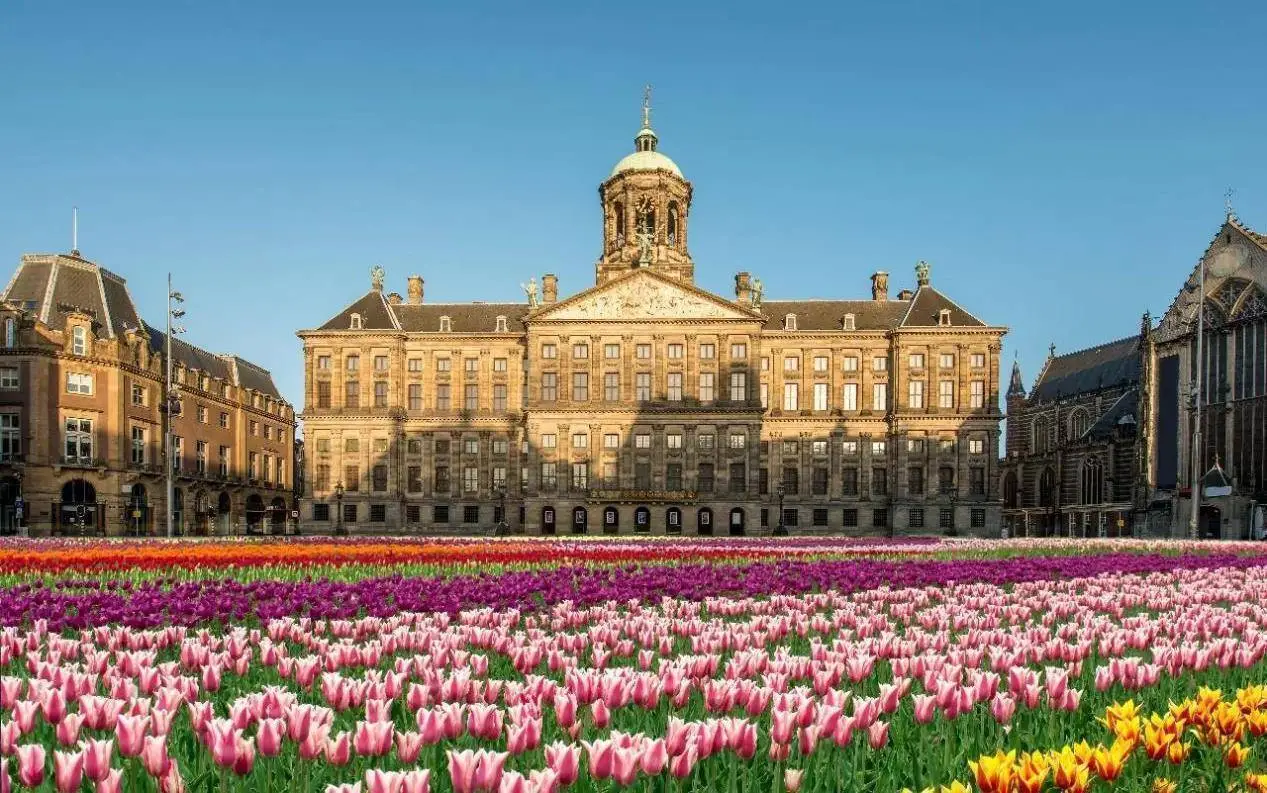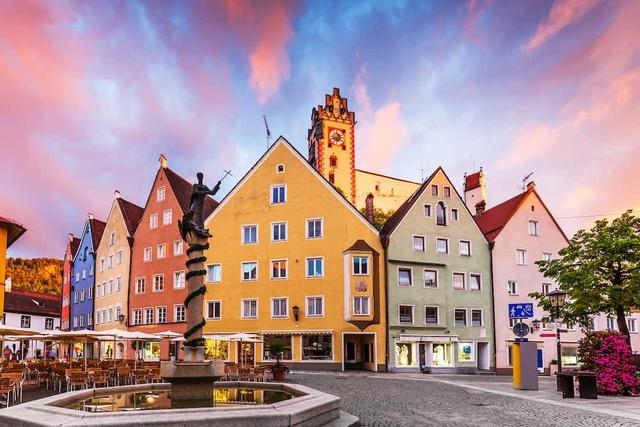您现在的位置是:首页 > China Travel > 正文
China Travel
The Best Travel Destinations in China
TheBestTravelDestinationsinChina
The Best Travel Destinations in China
Introduction

China, a vast and ancient land, is a treasure trove of travel destinations that blend a rich tapestry of history, vibrant culture, and breathtaking natural landscapes. From the frozen north to the tropical south, from the arid deserts in the west to the bustling coastal cities in the east, China offers an array of experiences that cater to every type of traveler. In this article, we will take you on a virtual journey to some of the best travel destinations in China, each with its own unique allure.
Natural Wonders
The Great Wall
The Great Wall is not just a wall but a series of fortifications built along the northern borders of China to protect the Chinese states and empires from various nomadic groups and foreign invaders. Stretching over 21,000 kilometers, it is one of the most iconic structures in the world. The most visited sections include Badaling, Mutianyu, and Simatai. At Badaling, the well-preserved walls and watchtowers offer a convenient and spectacular experience for tourists. Mutianyu, on the other hand, is less crowded and provides a more serene environment to appreciate the grandeur of the Great Wall. Simatai is known for its more challenging terrain and the opportunity to see the wall in a more rugged and natural state. Hiking along the Great Wall, one can feel the weight of history and marvel at the engineering feat that withstood the test of time.
Zhangjiajie National Forest Park
Zhangjiajie National Forest Park is a wonderland of natural beauty. It is famous for its towering quartz sandstone pillars, some of which rise over 300 meters into the air. The park is home to over 3,000 such pillars, creating a unique and otherworldly landscape. The Avatar Hallelujah Mountain, which is believed to be the inspiration for the floating mountains in the movie "Avatar," is a highlight of the park. The Golden Whip Stream, winding through the park, offers a peaceful and scenic stroll, surrounded by lush forests and clear waters. There are also several viewpoints, such as Tianmen Mountain, where visitors can take in the panoramic views of the park from above. The park is not only a visual treat but also a haven for biodiversity, with a wide variety of plant and animal species.
Jiuzhaigou Valley
Jiuzhaigou Valley is a nature reserve and national park located in the north of Sichuan province. It is renowned for its stunning water features, including lakes, waterfalls, and hot springs. The lakes, known as "haizi," are crystal clear and vary in color from turquoise to deep blue, depending on the minerals and light conditions. The Nuorilang Waterfall, one of the largest in China, is a magnificent sight, with water cascading down over 270 meters wide. The valley is also home to snow-capped mountains, lush forests, and alpine meadows, creating a harmonious blend of different ecosystems. In autumn, the valley is transformed into a colorful paradise as the leaves of the trees turn red, orange, and yellow, making it a particularly popular time to visit.
Guilin Landscape
The Guilin landscape, centered around the Li River, is a masterpiece of nature. The area is characterized by its unique karst topography, with limestone peaks rising abruptly from the ground, creating a landscape that looks like it has been painted on a traditional Chinese scroll. Taking a cruise along the Li River from Guilin to Yangshuo is a popular way to experience this natural wonder. Along the way, one can see iconic landmarks such as the Elephant Trunk Hill, which resembles an elephant drinking water from the river, and the Nine Horses Fresco Hill, where visitors can try to spot nine horses hidden in the rock formations. The surrounding countryside, with its rice paddies and traditional villages, adds to the charm of the area. The Guilin landscape has inspired countless poets and artists throughout Chinese history and continues to captivate visitors with its beauty.
Historical Treasures
The Forbidden City
The Forbidden City, located in the heart of Beijing, was the imperial palace of the Ming and Qing dynasties. It is the world's largest and most complete ancient wooden structure building complex. Covering an area of 720,000 square meters, the Forbidden City consists of more than 90 palaces and courtyards, and over 9,000 rooms. The buildings are arranged in a symmetrical layout, following the traditional Chinese architectural principles. The Meridian Gate, the main entrance, is an imposing structure with five openings. Inside, the Hall of Supreme Harmony, the largest wooden building in the Forbidden City, was used for important imperial ceremonies. The Forbidden City is not only a historical and architectural treasure but also a repository of Chinese art and culture, housing a vast collection of artifacts and antiques. Visiting the Forbidden City is like stepping back in time and experiencing the opulence and grandeur of the imperial era.
The Terracotta Army
The Terracotta Army, located in Xi'an, is one of the most significant archaeological discoveries of the 20th century. It is a collection of life-sized clay sculptures that were buried with Emperor Qin Shi Huang in the 3rd century BC to protect him in the afterlife. The army consists of thousands of soldiers, horses, chariots, and weapons, each uniquely crafted with detailed facial expressions and clothing. The main pit, Pit 1, is the largest and contains the majority of the terracotta figures, arranged in battle formations. Pit 2 and Pit 3 also contain important artifacts, including more soldiers, cavalry, and a command post. The discovery of the Terracotta Army has provided valuable insights into the military, art, and culture of the Qin Dynasty. It is a must-visit destination for anyone interested in ancient history and archaeology.
The Mogao Caves
The Mogao Caves, also known as the Thousand Buddha Caves, are located in Dunhuang, Gansu province. They are a series of Buddhist cave temples that were built over a period of more than a thousand years, from the 4th to the 14th century. The caves contain a vast collection of Buddhist art, including murals, sculptures, and manuscripts. The murals, which cover an area of over 45,000 square meters, depict various Buddhist stories, as well as scenes of daily life in ancient China. The sculptures, made of clay and wood, are exquisitely crafted and showcase the development of Buddhist art in different periods. The Mogao Caves are not only a religious and artistic treasure but also a window into the cultural exchange between China and the West along the Silk Road. They are a UNESCO World Heritage Site and attract visitors from all over the world.
The Potala Palace
The Potala Palace, located in Lhasa, Tibet, is a magnificent architectural and religious landmark. It was built in the 7th century by King Songtsen Gampo and later became the winter residence of the Dalai Lama. The palace, which stands on Red Hill, is 13 stories high and has more than 1,000 rooms. The exterior of the palace is a combination of white and red, symbolizing purity and power. Inside, the palace is filled with precious religious artifacts, including statues, thangkas (Tibetan Buddhist paintings), and scriptures. The Potala Palace is a masterpiece of Tibetan architecture and a symbol of Tibetan Buddhism. It offers a unique opportunity to experience the rich culture and traditions of Tibet.
Cultural Hubs
Beijing
Beijing, the capital of China, is a city that seamlessly blends ancient traditions with modern development. It is home to many historical and cultural attractions, such as the Forbidden City, the Great Wall, the Temple of Heaven, and the Summer Palace. The Temple of Heaven, a complex of religious buildings, was used by emperors of the Ming and Qing dynasties to perform sacrifices and pray for good harvests. The Summer Palace, a former imperial garden, is a beautiful and serene place with palaces, temples, lakes, and gardens. In addition to its historical sites, Beijing is also a vibrant modern city with a thriving arts scene, world-class museums, and a wide variety of cuisine. The National Museum of China, one of the largest museums in the world, houses a vast collection of Chinese art and history. Beijing is also famous for its Peking duck, a delicious dish that is a must-try for visitors.
Shanghai
Shanghai is China's largest city and a global financial and cultural hub. It is known for its modern skyline, which is dominated by skyscrapers such as the Shanghai Tower, the Oriental Pearl Tower, and the Jin Mao Tower. The Bund, a waterfront area in central Shanghai, features a row of historical buildings that reflect the city's colonial past. The Yuyuan Garden, a traditional Chinese garden, offers a peaceful retreat from the hustle and bustle of the city. Shanghai is also a shopping paradise, with many high-end shopping malls and traditional markets. The Nanjing Road, one of the busiest shopping streets in the world, offers a wide range of products, from luxury brands to local handicrafts. The city is also famous for its nightlife, with many bars, clubs, and restaurants. Shanghai is a city that never sleeps and offers a unique experience for visitors.
Hangzhou
Hangzhou, located in Zhejiang province, is known as the "Paradise on Earth." It is famous for its beautiful West Lake, which is surrounded by mountains, temples, and gardens. The lake is divided into five sections by causeways and bridges, and each section has its own unique scenery. The Su Causeway and the Bai Causeway, named after two famous poets in Chinese history, Su Shi and Bai Juyi, are popular places for walking and cycling. The Leifeng Pagoda, located on the south bank of the lake, is a historical landmark that offers a panoramic view of the lake. Hangzhou is also known for its silk industry, and visitors can visit silk factories and shops to learn about the production process and buy high-quality silk products. The city's cuisine, which features dishes such as Dongpo Pork and West Lake Fish in Vinegar Gravy, is also highly regarded.
Lijiang
Lijiang, located in Yunnan province, is a ancient city with a history of more than 800 years. It is a UNESCO World Heritage Site and is known for its well-preserved ancient architecture, traditional culture, and beautiful natural scenery. The city is built around the Lijiang River, and the waterways and bridges add to its charm. The Old Town of Lijiang is a maze of narrow streets and alleys, lined with traditional wooden houses and shops. The city is also home to the Naxi ethnic group, and visitors can experience their unique culture, including their language, music, and dance. The Jade Dragon Snow Mountain, located near Lijiang, is a beautiful mountain range with snow-capped peaks. It is a popular destination for hiking and skiing. Lijiang is a place where visitors can slow down and enjoy the simple pleasures of life.
Beach Getaways
Sanya
Sanya, located at the southernmost tip of Hainan Island, is a tropical paradise known for its beautiful beaches, clear blue waters, and warm climate. The Yalong Bay, Dadonghai Beach, and Sanya Bay are some of the most popular beaches in Sanya. The Yalong Bay, with its white sand and crystal-clear water, is a favorite among tourists for swimming, sunbathing, and water sports such as diving, snorkeling, and jet skiing. The Dadonghai Beach is more convenient for tourists, with many hotels, restaurants, and entertainment facilities nearby. The Sanya Bay is a long beach that offers a beautiful view of the sunset. In addition to its beaches, Sanya is also home to many attractions, such as the Nanshan Temple, a large Buddhist temple, and the Tianyahaijiao Scenic Area, which is known for its rocks inscribed with the words "Tianya" (End of the Sky) and "Haijiao" (Corner of the Sea).
Xiamen
Xiamen, located on the southeast coast of China, is a coastal city with a unique blend of Chinese and Western cultures. The Gulangyu Island, a UNESCO World Heritage Site, is a popular tourist destination in Xiamen. The island is known for its beautiful beaches, colonial-era architecture, and vibrant cultural scene. The island is car-free, making it a peaceful and pleasant place to explore on foot. The Shuzhuang Garden, a traditional Chinese garden on the island, is a must-visit attraction. The garden features a collection of pavilions, bridges, and lakes, as well as a piano museum. The Nanputuo Temple, located at the foot of the Wulaofeng Mountain, is a famous Buddhist temple in Xiamen. The temple is known for its beautiful architecture and its vegetarian cuisine. Xiamen is also a great place to try local seafood, which is fresh and delicious.
Adventure Destinations
Tibet
Tibet, known as the "Roof of the World," is a region with a unique culture and stunning natural scenery. It is home to the world's highest mountains, including Mount Everest, as well as vast grasslands, deep gorges, and beautiful lakes. The Mount Everest Base Camp, located in the Rongbuk Valley, is a popular destination for adventure seekers. Trekking to the base camp offers a challenging and rewarding experience, with breathtaking views of the mountain. The Namtso Lake, one of the three holy lakes in Tibet, is a beautiful and serene place. The lake is surrounded by snow-capped mountains and is a popular place for pilgrims and tourists. Tibet is also known for its unique culture, including its Buddhism, traditional festivals, and handicrafts. Visiting Tibet is a once-in-a-lifetime experience that offers a glimpse into a different world.
Yunnan
Yunnan, located in the southwest of China, is a province with a rich diversity of ethnic groups, cultures, and natural landscapes. It is a paradise for adventure lovers, with activities such as hiking, trekking, cycling, and rock climbing. The Tiger Leaping Gorge, located in the northwest of Yunnan, is one of the deepest gorges in the world. Hiking along the gorge offers a challenging and rewarding experience, with stunning views of the mountains and the river. The Yuanyang Rice Terraces, located in the south of Yunnan, are a UNESCO World Heritage Site. The terraces, which were built by the Hani ethnic group over hundreds of years, are a beautiful sight, especially during the rice-planting and harvesting seasons. Yunnan is also home to many national parks, such as the Xishuangbanna Tropical Rainforest National Park, where visitors can explore the rainforest and see a variety of wildlife.
Xinjiang
Xinjiang, located in the northwest of China, is a vast region with a rich history and culture. It is known for its beautiful deserts, mountains, lakes, and grasslands. The Taklamakan Desert, the largest desert in China, is a vast expanse of sand dunes that offers a unique experience for adventure seekers. Camel trekking in the desert is a popular activity, allowing visitors to experience the harsh beauty of the desert. The Tianshan Mountains, located in the middle of Xinjiang, are a beautiful mountain range with snow-capped peaks and clear lakes. The Kanas Lake, located in the northern part of Xinjiang, is a beautiful and mysterious lake. The lake is surrounded by mountains and is a popular place for fishing, boating, and hiking. Xinjiang is also home to many ethnic groups, such as the Uyghur, Kazakh, and Hui, and visitors can experience their unique cultures, including their music, dance, and cuisine.
Conclusion
China is a country with an endless array of travel destinations that offer something for everyone. Whether you are interested in exploring ancient history, experiencing vibrant cultures, enjoying natural beauty, or seeking adventure, China has it all. From the iconic Great Wall and the Forbidden City to the breathtaking landscapes of Zhangjiajie and Jiuzhaigou, from the modern cities of Beijing and Shanghai to the beach getaways of Sanya and Xiamen, and from the adventure destinations of Tibet and Yunnan to the unique culture of Xinjiang, China is a destination that will leave you with unforgettable memories. So, pack your bags and embark on a journey to discover the best that China has to offer.
相关文章
- Budget China: Fuyang’s Ecological Parks and Rural Scenery for Under $35 a Day
- Cheap Travel in China: Bozhou’s Traditional Medicine Culture and Ancient Streets on a Budget
- Affordable China Destinations: Chizhou’s Jiuhua Mountain and Buddhist Sites on a Budget
- Budget-Friendly China: Huangshan City’s Villages and Tea Plantations on a Shoestring
- Cheap China Travel: Jingdezhen’s Porcelain Culture and Workshops for Less
- Affordable China Getaways: Yingtan’s Longhu Mountain and Taoist Heritage on a Budget
- Budget China: Nanchang’s Tengwang Pavilion and Gan River Night Views for Under $40 a Day
- Cheap Travel in China: Jiujiang’s Poyang Lake and Lushan Mountain Gateway on a Budget
- Affordable China Destinations: Yichun’s(Mingyue Mountain) and Hot Springs for Less
- Budget-Friendly China: Shangrao’s Sanqing Mountain and Ancient Villages on a Shoestring
发表评论
评论列表
- 这篇文章还没有收到评论,赶紧来抢沙发吧~


